About New England
New England is a region which comprises six states of the Northeastern United States, Pilgrims from England first settled in New England in 1620. They named places in the ‘New World’ after famous locations in Britain by adding the prefix ‘New’. For example, ‘New’ York becomes the name of today’s top American metropolis New York.
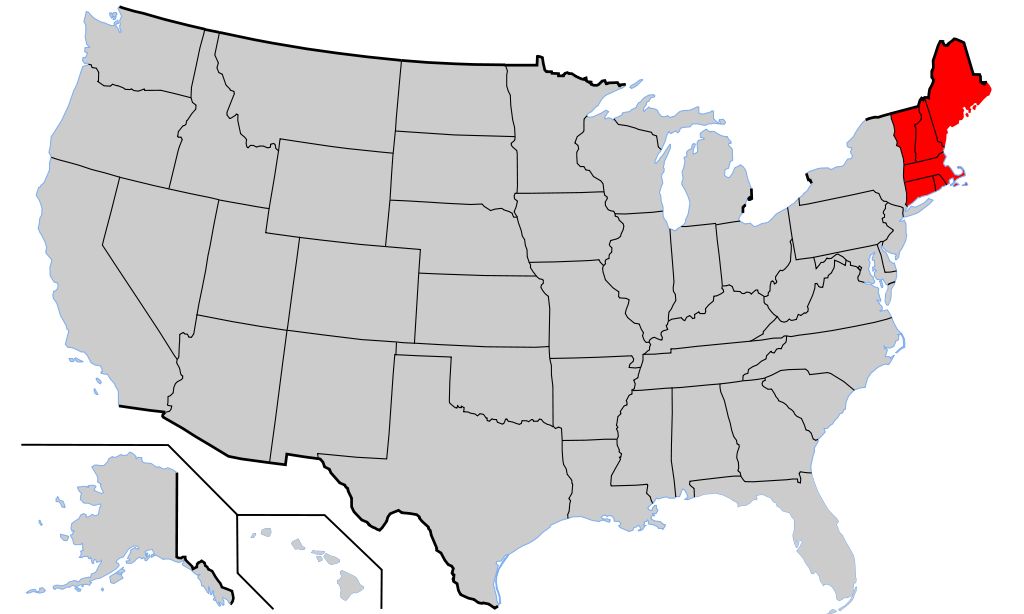
(Source: wikipedia)
About Foliage
Ideally, the best foliage occurs when autumn days are mild and the evenings are cool and crisp, but not below freezing. However, if daytime temperatures are too warm for a relatively long period of time in the fall, the colors may be less intense. Due to the strict weather requirements and the abundant tree species, foliage in New England undoubtedly ranks top in the United States.
This short trip dated back to October 2015, lasted for 4 days covering the town of Stowe in Vermont and White Mountain area in New Hampshire.
It is challenging to catch the peak days of foliage. The foliage network website http://www.foliagenetwork.com gives status reports twice a week in Fall season as well as historical reports, which provides very good reference. From my past experience, the real peak color occurs when the report says ‘near peak’. A large percent of leaves drop and colors turn gray if you wait for ‘at peak’ in reports.
About the Town – Stowe
This is a small yet famous town in Vermont and was voted by TripAdvisor users ‘the best Fall Color Town’ in 2015. What benefit me most is the 15 scenic drives summarized by the website of Stowe http://www.gostowe.com/. The drives covered all kinds of attractions including farms, lakes, mountains, forest… This town knows exactly how to guide the tourists in this whole area with stunning natural scenery. The only drawback, to me, was the turn-by-turn instructions, which indeed overloaded me as I kept driving, finding my way while looking for good photography opportunities. Luckily during work days, there was very little traffic on road otherwise it could be a nightmare. I would suggest to bring a friend at passenger side serving as a pilot. The scenic drive on the website has foliage status indications and was in very good consistency with the actual view from my observations. That’s the secret how I caught the foliage at its peak color. As White Mountain in New Hampshire is not far away, whenever you see ‘peak color’ at Stowe website, the colors in White Mountain area are vibrant as well.
Photography Locations
Below are several photography locations I like during my trip. I would like to skip the popular attractions for regular tourists as the information is everywhere over web.
The landmark church of Stowe with typical New England architecture style – the signature Stowe shot: good photography opportunities no matter in the morning, mid of day, or at dusk. Definitely one of my fav. GPS: 44°28’6.61″N 72°41’14.83″W
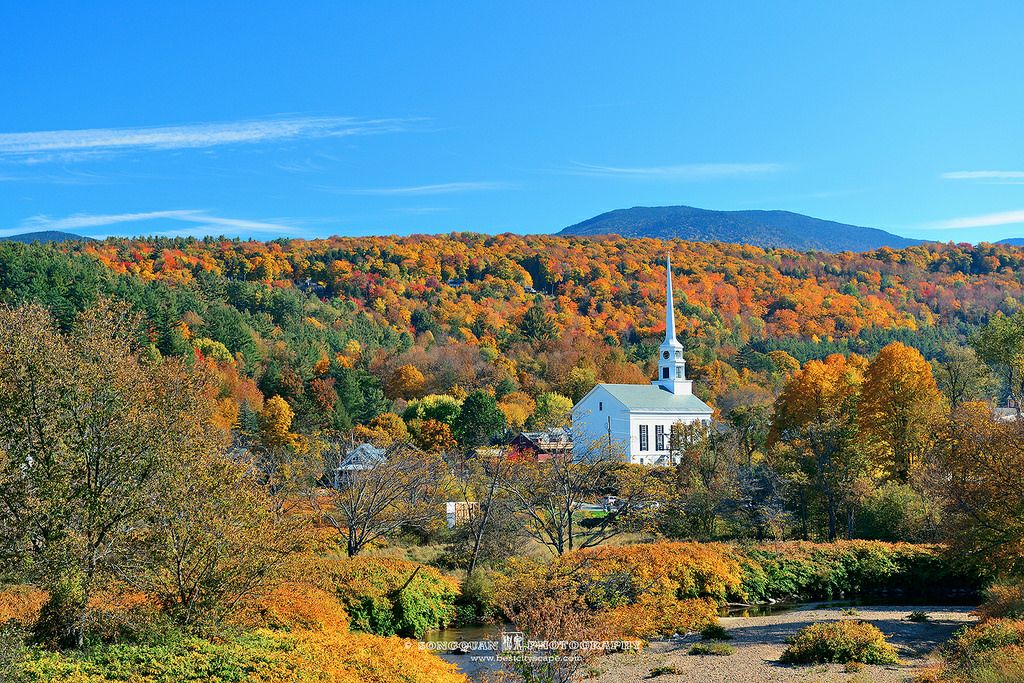
Vibrant foliage colors
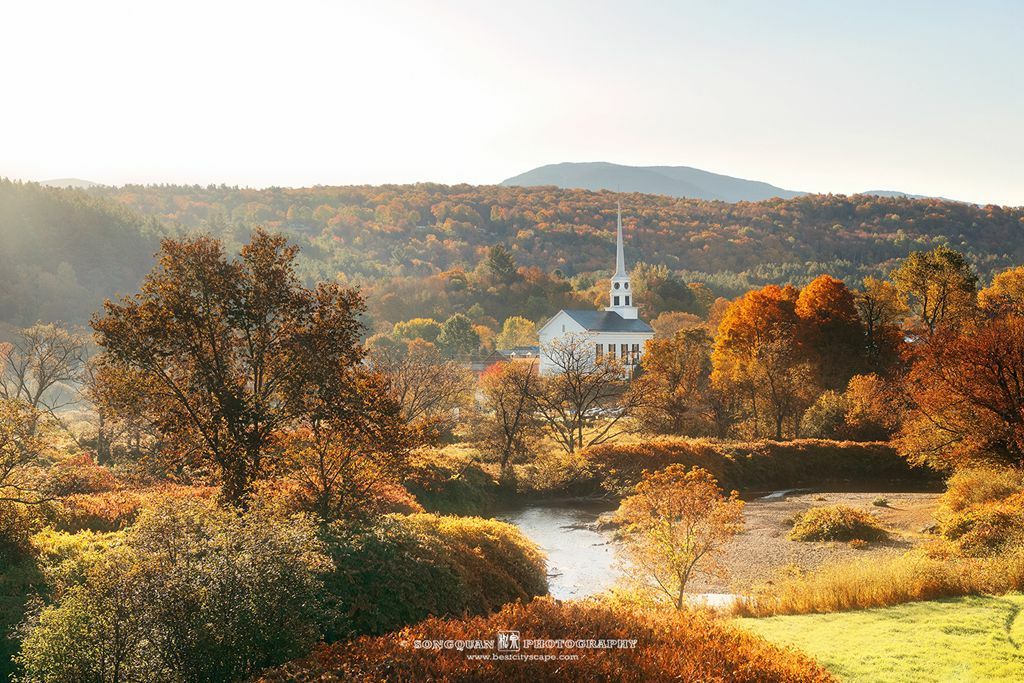
Mist and morning light
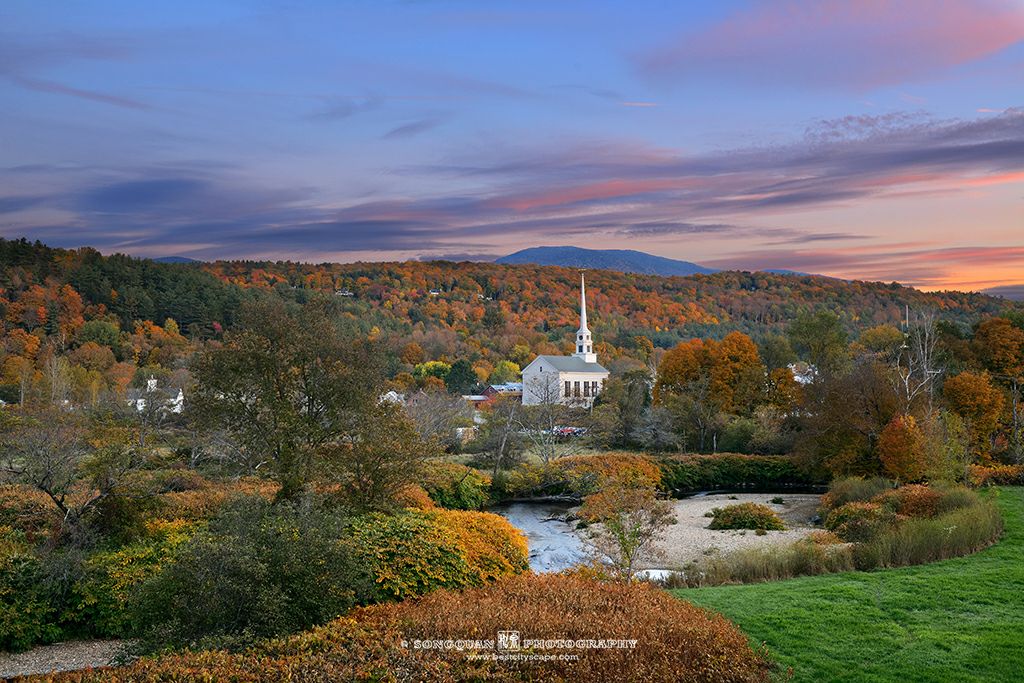
Sunset and colorful sky
Waterbury Reservoir (GPS: Parking – 44°22’44.63″N 72°43’31.87″W, Lake Front – 44°22’57.86″N 72°43’43.10″W) is another nice location with only 10 minutes’ drive from town center. Due to the cool temperature at night in Fall, there is high chance to have fog above lake water in early morning, which yields nice shots.
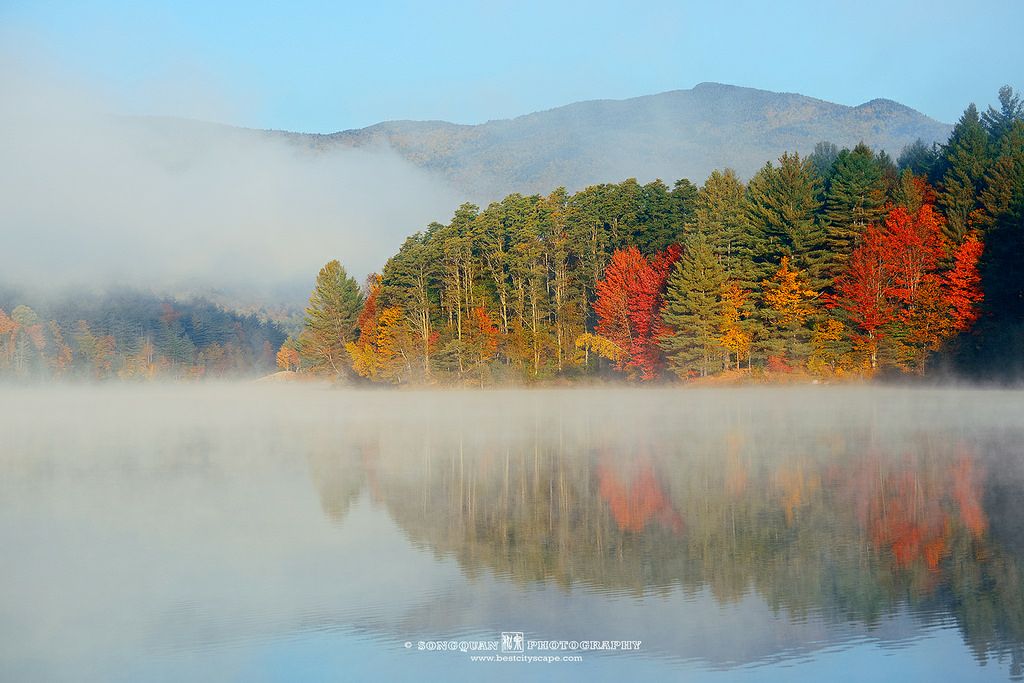
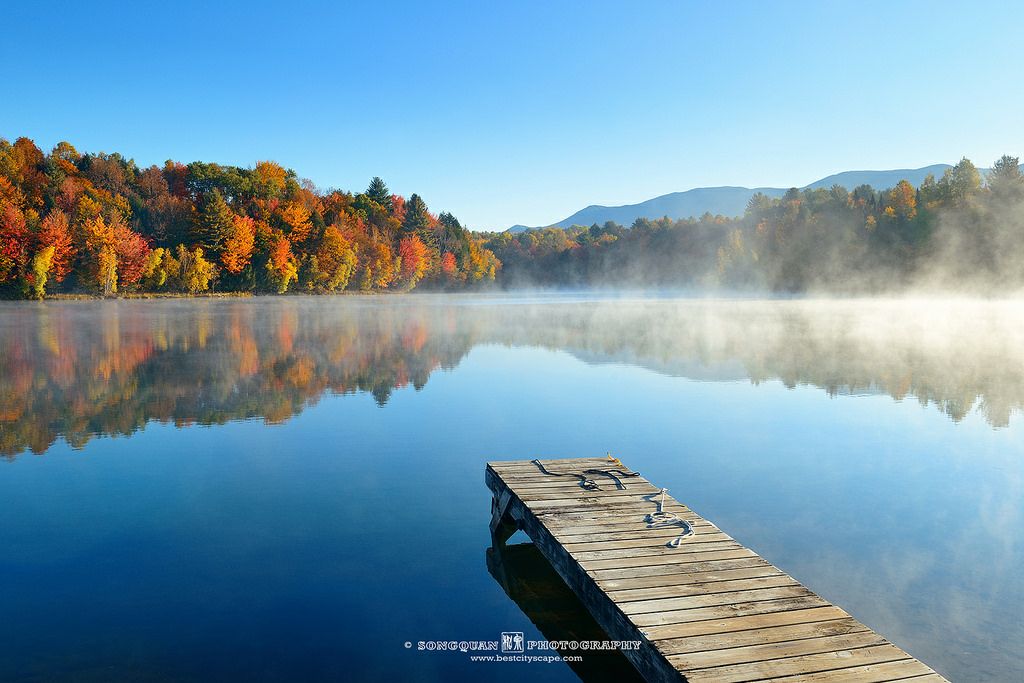
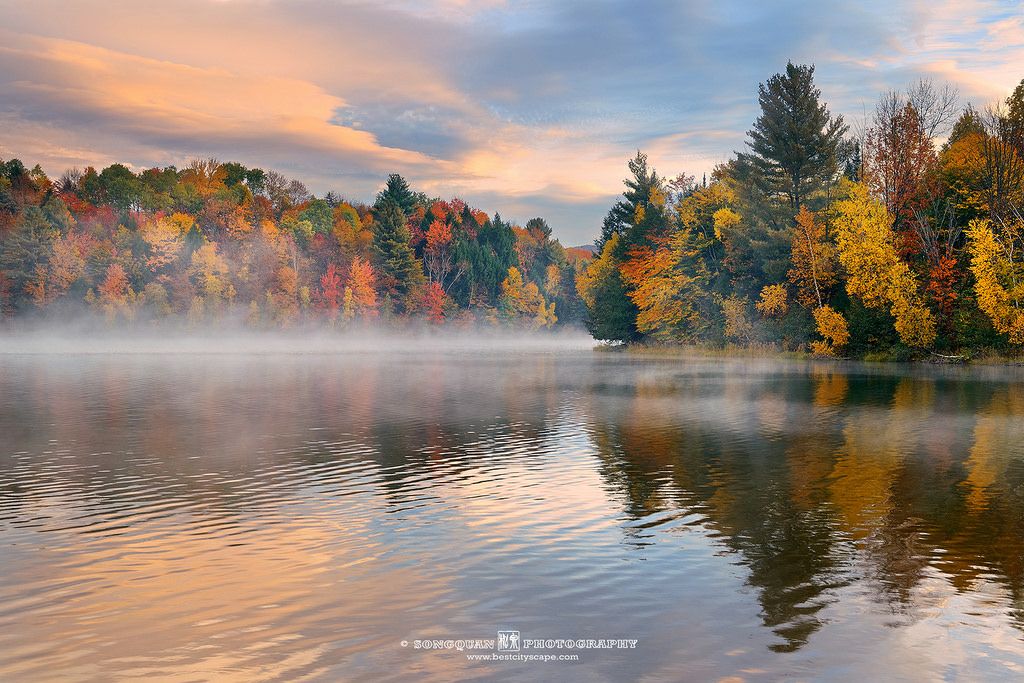

As the waterfront is wide-open, it is a perfect location to shoot the starring night sky. Since Vermont has forest covering 70% of the land, the air is clean. The town lights, which is only 6 miles away, surprisingly did not pollute the sky. The stars and milky way were bright enough to be seen by naked eyes.
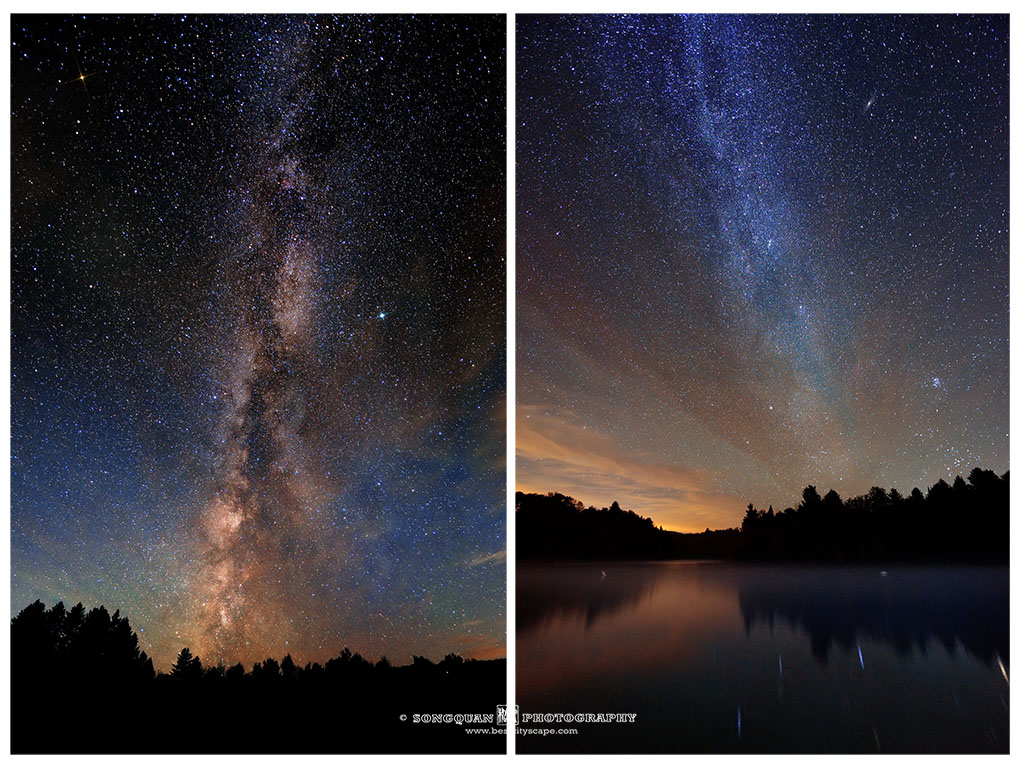
The shot on left is the milky way over southwestern horizon and is bright since it is closing to galaxy center. The one on right is the far part from center in northeastern direction. A bit dim actually. The best time to photography milky way in Northern Hemisphere ranges from Spring to Fall with the milky way at its brightest in Summer. In winter, as the center is well below horizon, the part visible is very light.
Couple of technical issues to get a nice milky way shot below…
First, the stars except Polaris are all moving even though your eyes may not see it. The long exposure creates light trails in your photo just like the one caused by car taillight, which blurs the milky way. As a result, shutter speed cannot be too slow.
How to get bright picture when sky is dark and shutter speed can’t be slow? You need lens with large aperture ($$$). As the star movement appears less with wide angle lens, you need it as well ($$$$$$). Now the picture is still dark? Let’s go with high ISO. We know noise is huge and details are crappy. Ok, you need better camera with good high ISO performance ($$$$$$$$%#@&&###!).
My settings for your references: Nikon D800 (not indeed a high ISO camera but ok), 14-24mm at 14mm, f2.8, shutter speed 30s, ISO 3600.
Thank you for your time. You are welcome to check my site for full collection of this trip.
https://bestcityscape.com/?product_cat=newenglandfoliage&paged=1
Songquan Photography is the author of this article and reserve full rights. You are welcome to repost. Please credit the author.
___________________________________________________________________
Original URL of this post: https://bestcityscape.com/?p=35177
